Knowledge Sharing
Renovating Hospitality Spaces, from the Inside Out
In the competitive world of hospitality spaces, first impressions are everything. From grand lobbies to intimate guest rooms, every detail of a hotel speaks volumes about its brand and commitment to guest satisfaction.
However, renovations in the hospitality sector often require more than a fresh coat of paint. They involve meticulous planning, seamless execution, and a deep understanding of the facility’s operation. If the hotel plans to remain operational throughout the course of construction, renovations also require careful phasing to ensure minimal disruption to business operations. As general contractors that specialize in hotel and hospitality construction projects, Skyline’s role is to guide the process and all the key stakeholders from start to finish, ensuring that the renovation enhances the guest experience while adhering to the brand’s vision and operational requirements – a practice that shares many similarities to traditional building renovations.
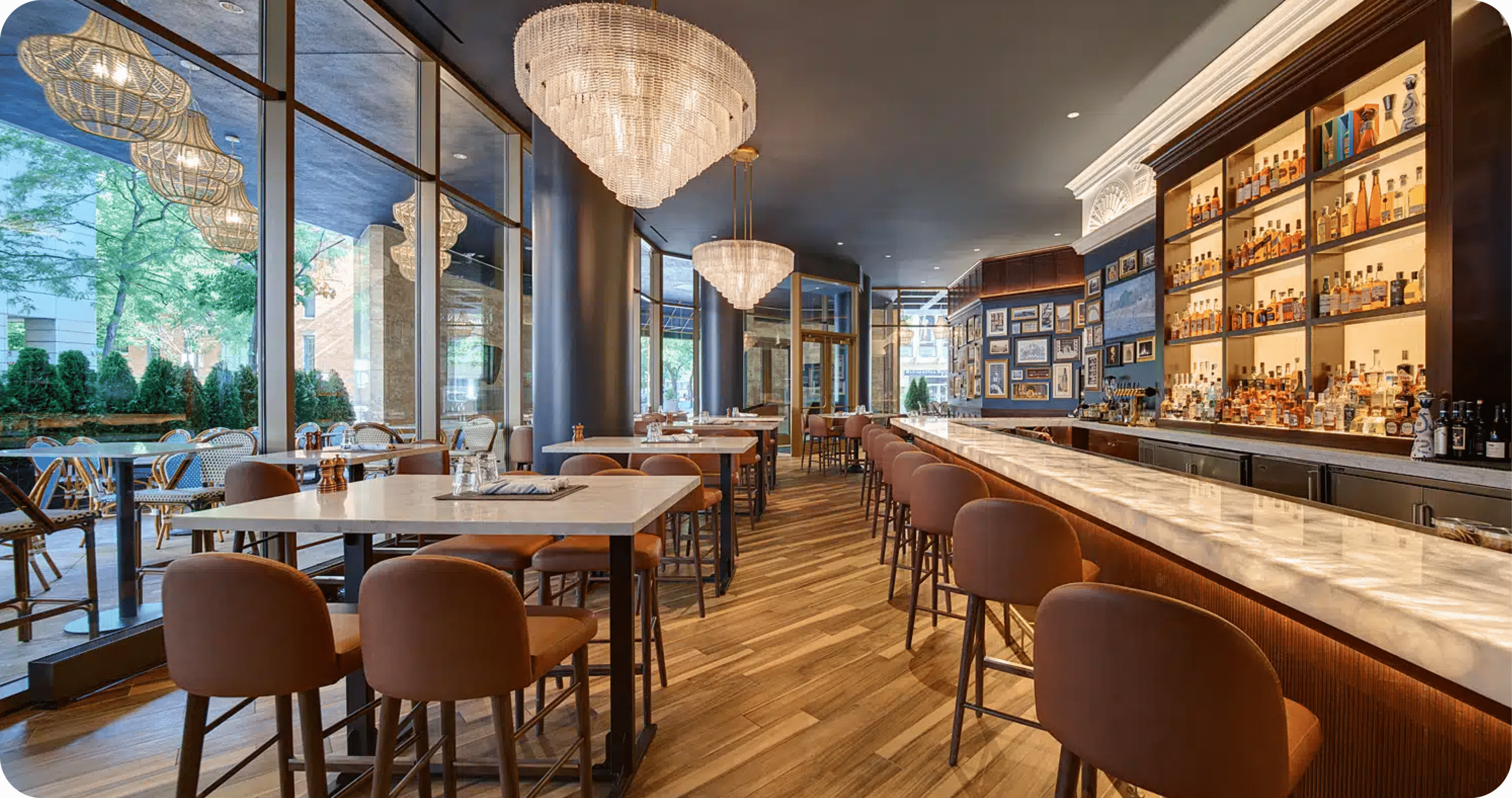
“Being the general contractor on hospitality projects requires coordination and clear communication to guide all the moving parts, including things like furniture and network requirements,” said Wes Klockowski, project executive at Skyline Construction. “These items often fall outside of the general contractor’s scope, so it’s imperative that we guide the construction schedule.”
Klockowski and his team spearheaded the conversion of the former hotel at 101 E. Erie in Chicago to a Residence Inn by Marriott. Opened this past July, the project consisted of renovating and adding kitchenettes to all 289 guest rooms, new paint and carpet in the hallways and common areas, plus the construction of a new ground-floor restaurant, an airy-and-open buffet on the 20th floor, and an outdoor roof deck restaurant and bar for guests.
From our recent work on this project, and others like the Westin Hotel in Seattle, where team members remodeled the 891-room hotel’s lobby, bar and lounge area – Skyline has seen firsthand how hospitality renovations can transform a space, enhance guest experiences and boost a facility’s value. Here are the key areas of consideration to review prior to beginning a hospitality renovation.
Minimizing Disruptions to Guests and Employees
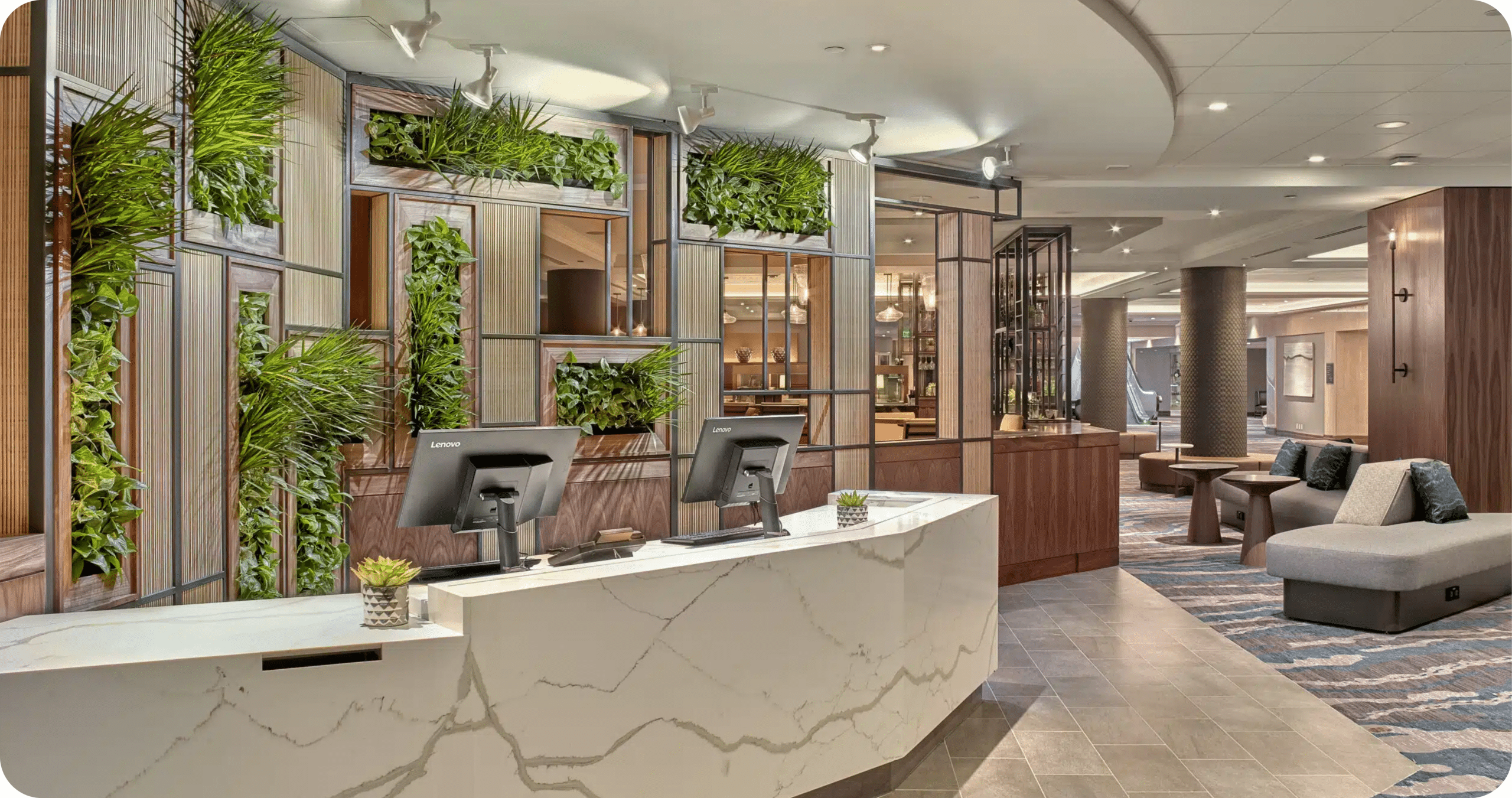
As opposed to most tenant improvement projects, where work can be done before and after business hours, the hospitality industry runs 24/7, meaning that hotels and resorts often need to remain operational during renovations. Because of this, general contractors need to ensure that the renovation work is carried out with minimal disruption to employees and guests.
“From the get-go, we knew that the space would become occupied once the kitchen staff at Residence Inn started testing their equipment before opening,” said Dan Polito, Skyline’s director of operations in Chicago. “With 30+ hotel staff members occupying a space while construction teams finalized every detail, the level of coordination certainly increased.”
As such, communication with hotel management and staff is key. They need to know exactly when and where work will be happening so they can manage employees and guests’ expectations effectively.
Understanding the Brand Vision
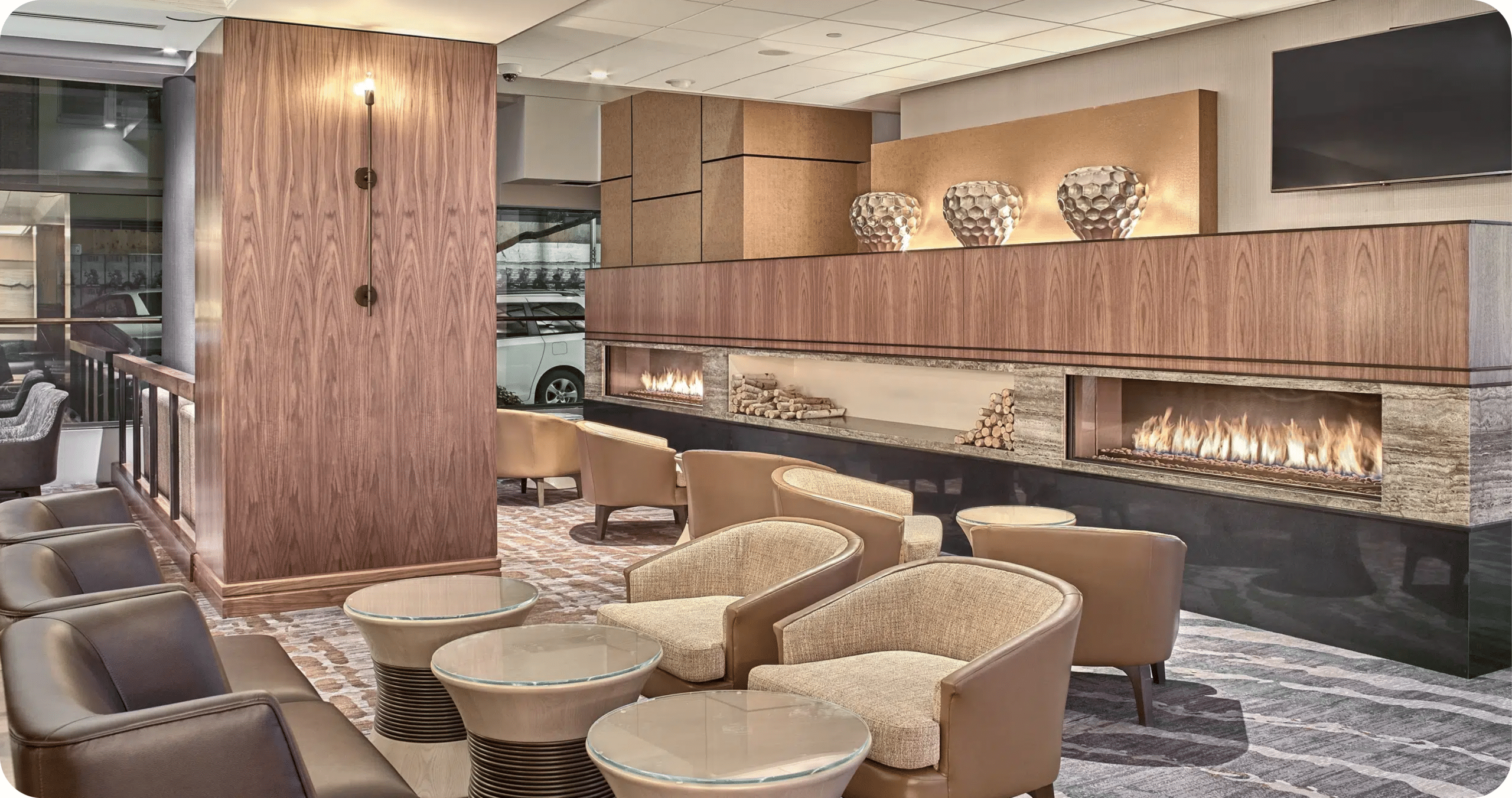
Every hospitality brand has its unique identity, and a renovation project must reflect that vision. Be it a high-end luxury resort or a budget-friendly hotel chain, general contractors need to work closely with designers, architects, and property owners to ensure that the finished space aligns with the brand’s goals.
“There’s a heavy precedent on the look, feel, and level of finish,” Polito said. “That’s their brand. That’s a money driver for them.” As such, it is vital to stay in constant communication with the designer and architect so the general contractor can be sure that items are being executed according to exact specifications. For the Residence Inn project, the Skyline team benefited from seamless collaboration on this front.
“Our architect partner, Lamar Johnson Collaborative, made this project incredibly smooth,” added Chris Przybysz, project manager for Skyline. “Their team walked the construction site frequently, assessing progress, and making changes as needed. Having a local architect presence with the ability to visit the jobsite makes a huge impact.”
Balancing Aesthetics and Durability
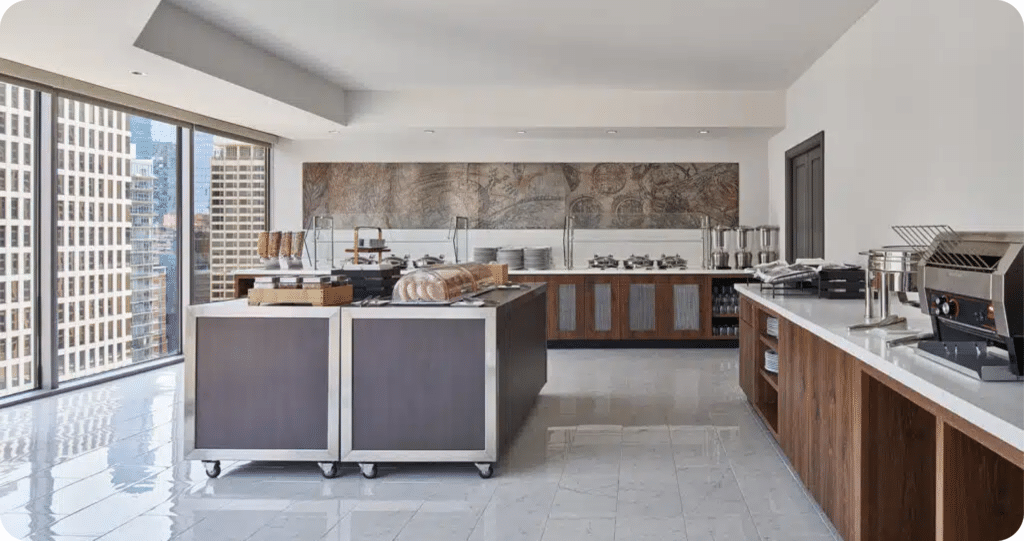
Hospitality facilities endure heavy wear-and-tear, from the constant flow of guests to the need for frequent cleaning and maintenance. Selecting the right materials that are both visually appealing and durable is crucial. Items such as flooring and furniture should complement the design aesthetic while still being resistant to damage and easy to clean, not to mention executed in a way that ensures the efficient execution of the various hotel operations.
“Marriott came in and said, ‘We can’t install this much glass – it’s going to add an extra five minutes of cleaning time in every room for our operations staff,’” said Klockowski. “So recognizing that the aesthetic and design works without negatively impacting the hotel’s operations is paramount.”
Strict Adherence to Timelines and Budgets
One of the greatest challenges in hospitality renovations is staying on schedule and within budget. Every day that a room or facility is out of service represents lost revenue for the hotel, making it critical for contractors to work efficiently. Careful planning and coordination with suppliers, designers, and hotel management helps prevent costly delays.
“$100,000 in savings on a particular item during the procurement phase of construction does not make sense when you stand to lose $3 million in operating earnings by waiting for the part to arrive or having to replace it due to the lack of quality,” said Polito. “So because of that, the mindset around decision making shifts to focus on what’s fastest, quickest, most reliable, most durable in order to open as early as possible and not have to worry about constantly repairing or replacing items.”
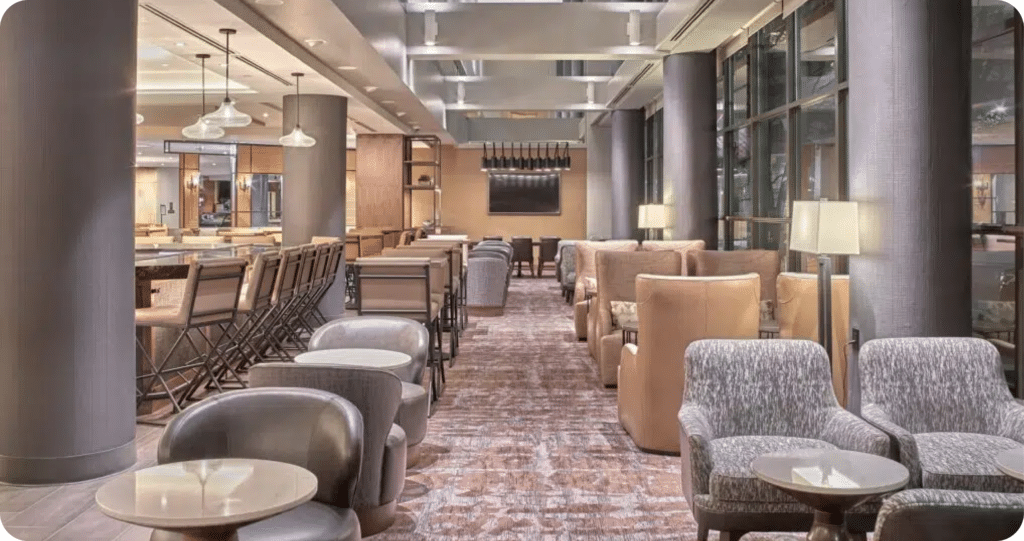
Another item especially important for keeping hospitality renovations on schedule is the procurement of FF&E (furniture, fixtures and equipment). All spaces within a hotel – guest rooms, restaurants, amenity spaces – have an array of these items, and without them, each would lack functionality and polish.
“Here in hotels, you can’t open a guest room until all the components are installed perfectly, including mirrors, artwork and more,” said Alex Gomez, senior superintendent. “This differs drastically from traditional commercial office projects where wall furnishings and other decorations often come later. Understandably, Marriott didn’t want to open a room to guests until all components were perfectly in place.”
An experienced general contractor can anticipate potential roadblocks and adjust scheduling plans to keep the project on track. One recent example involved the plumbing riser design, where our team conducted a schedule study, pointed out a time saving opportunity and recommended that the client modify the original horizontal-only implementation to a 50/50 horizontal/vertical split. This small tweak allowed us to tear out only half of the ceilings, rather than all the ceilings, saving both significant time and money for our client.
Adapting to Industry Trends
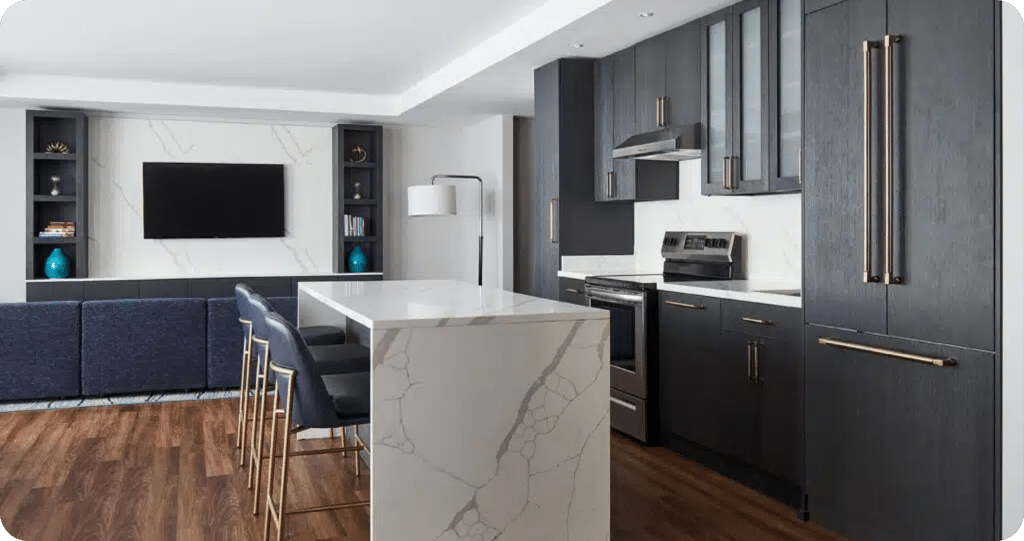
In the hospitality sector, staying current with industry trends is essential. Some key changes are the demand for eco-friendly designs, smart technology integration, and versatile spaces that cater to both business and leisure travelers.
With extended stay hotels, where many guests are often longer-term business travelers, this facet is especially important. “The rooms need to be designed for people to work and play,” said Kristal Craven, an assistant project manager at Skyline who entered the construction industry after a career working in the hospitality industry. “Constructing rooms with dedicated work areas with desks, along with nice seating areas to unplug and unwind is important.”
Additionally, amenities that offer an extraordinary experience have taken precedence over items that are simply for show. “People are shifting away from ‘Instagram-able’ moments and more towards experiences, such as a great gastronomic experience and other things you can’t experience at any other hotel,” Craven added.
Seamless Integration of New and Old
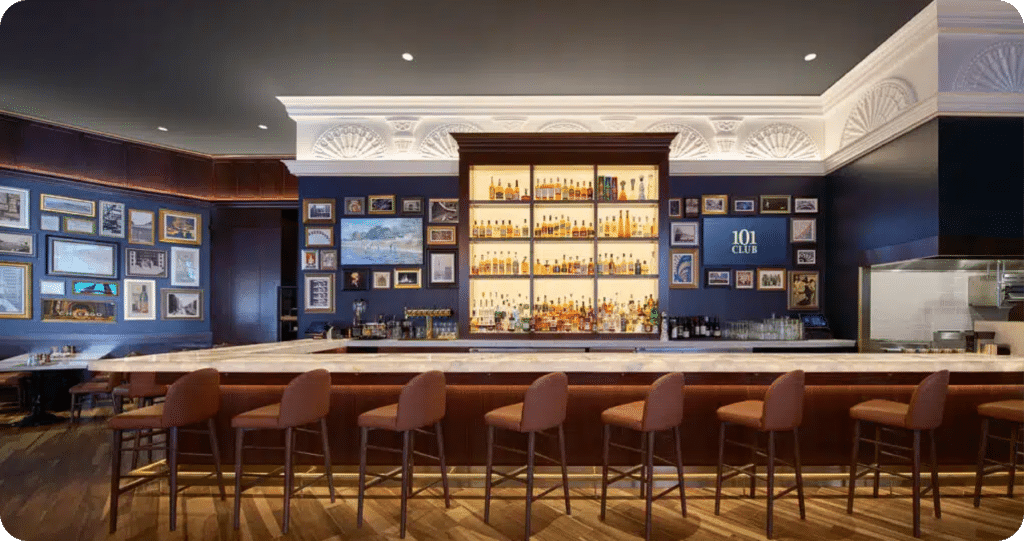
Many hospitality renovations involve updating older buildings with new features while preserving their charm and character. Whether it’s a historic hotel with a long-standing reputation or the repositioning of an iconic former office building, it is crucial to maintain the essence of the original structure while introducing modern amenities.
One challenge, however, with bringing these older buildings up to modern-day standards is the potential problems that lay underneath the surface façade, especially if the spaces have sat vacant for long periods of time or have been converted into many different types of spaces throughout their evolution.
“If a building sits unattended for a long period, stuff inevitably breaks,” said Klockowski. “As such, upfront investment to investigating and fixing these issues can make a lot of sense when you put it in terms of the impact to being partially or completely open and operational.”
“During these conversions,” Przybysz added, “it’s vital to take advantage of when walls and ceilings are open to address maintenance that may be beyond the project scope.”
Final Thoughts
The construction of renovating a hotel or hospitality facility is a complex, multifaceted process that goes far beyond cosmetic upgrades. It involves strategic planning, detailed coordination, and a deep understanding of the industry’s demands.
With the right team and approach, a hospitality renovation can not only refresh a property’s appearance, but also elevate its status in the marketplace, creating a lasting impact on both guests and the business.
READ NEXT
